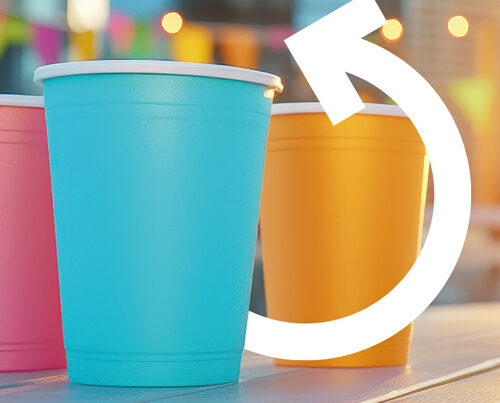This reform aims to set uniform, Europe-wide rules to reduce packaging waste and grow recyclability. Following a number of rounds of intensive trilogue negotiations, a political agreement was reached in the spring of 2024. Things are now beginning to get serious: the PPWR will gradually come into effect from 2026 onwards – and have a tangible impact on manufacturers, retailers and waste management businesses.
What is the PPWR & why is it important?
The PPWR replaces the previous Packaging and Packaging Waste Directive (94/62/EC) with a mandatory EU-wide regulation. Its goal is to reduce the negative impact packaging has on the environment as well as to simultaneously strengthen the internal market. By taking this step, the EU is responding to both the growing volumes of packaging and the still-too-low recycling rates in many of its member states.
As a result, this new regulation contains a whole number of rules that will come into effect immediately; it is also supplemented with delegated acts and technical criteria that must still be passed by the European Commission.
The PPWR’s key objectives:
- a reduction in the volumes of packaging by 15% per capita by 2040
- mandatory reuse rates for certain types of packaging
- strict recyclability rules
- EU-wide labelling & information obligations
- a ban on certain types of single-use packaging (e.g. for fresh fruit & vegetables)
Who is affected by the PPWR?
The new regulation is aimed at all companies that place packaging on the market – from large international firms to medium-sized online retailers. It affects, in particular:
- producers of packaging & packed products
- importers & initial distributors
- traders (stationary & online)
- system operators & waste management firms
The rules apply to all businesses irrespective of the size of their company; exemptions have, however, been drawn up for micro-enterprises.
An overview of some of the key content
Design for recycling
From 2030 onwards, all packaging being placed on the market must be recyclable. Packaging recyclability shall be both defined and assessed according to a set of harmonised criteria specified by the EU Commission. Packaging that does not achieve ‘Recycling Category A’ shall be banned over the medium term.
Re-use rates
In the future, certain sectors – such as the restaurant, take-away and online retail sectors – will have to meet the fixed rates set for reusable packaging. One example: 20% of drinks packaging sold on the take-away market must be reusable packaging by 2030.
Prevention of packaging
The regulation sets clear rules on the prevention of unnecessary packaging layers and on minimum fill rates. The empty space ratio for transport packaging, for example, should not exceed 50%.
Labelling obligations
In the future, all packaging must be labelled with standardised symbols that provide consumers with recycling information. There are also plans to introduce QR codes for providing additional digital information.
Uniform rules rather than a patchwork of different solutions
One central target of the PPWR is to harmonise national rules. Individual national solutions – such as Germany’s packaging law and France’s eco-label – should only be possible in exceptional cases in the future.
What companies need to do now
Packaging must meet the regulation’s recyclability requirements by 2030 and will no longer be able to be placed on the market after this date if it is not categorised as being recyclable.
It is, therefore, advisable for companies to analyse their product and packaging portfolio in good time so that they can implement any measures that may be required. The regulation has not allowed for a ‘soft transition period’ – i.e. the rules apply straight away from the dates set.
Businesses that wish to be well prepared should take action now. They should:
- analyse their packaging portfolio: which types of packaging are not recyclable or are oversized?
- check re-use solutions: is it possible to create take-back schemes or pooling solutions?
- involve their suppliers: communicate in good time how the packaging should now be designed and what materials should now be used.
- set up a data management system: centrally record all relevant product and recycling data.
“The PPWR signals a new era for EU packaging law: it is now uniform, mandatory and sets out clear obligations for all market players.”
Conclusion: some big challenges – and some big opportunities
The PPWR is a powerful lever for helping the EU create a European circular economy. For companies, this will initially mean having to put in a lot of work, make investments and rethink their packaging. Businesses that react early, however, can also give themselves a competitive edge – by delivering innovative, sustainable packaging solutions that are both compliant and customer friendly.
“The PPWR signals a new era for EU packaging law: it is now uniform, mandatory and sets out clear obligations for all market players. It not only requires technical adjustments to be made – but structural and strategic decisions as well. Companies should make the most of the remaining transition period to ensure their business complies with the new regulation,” advised Jörg Mauthe, LL.M., Head of Legal / Authorised Signatory at EKO-PUNKT.
EKO-PUNKT offers regular webinars, bespoke advice and digital solutions to help companies find the best possible way to prepare for the PPWR. Further information can be found by clicking on the following links (German only):
EKO-PUNKT Academy
Register today to take part in one of our PPWR webinars
EPR international compliance
The easy and PPWR-compliant way to license packaging in Europe
Have the recyclability of your packaging checked
Laboratory assessment | Online PackLab
Transport packaging
Take-back & recycling – nationwide
We’ll help you work your way through the PPWR labyrinth!
Contact EKO-PUNKT now
Image credits: image 1: Adobe Stock: rdnzl, Adobe Stock: Alexandr Bognat, Adobe Stock: hanahal; image 2: Adobe Stock: Robert Kneschke












